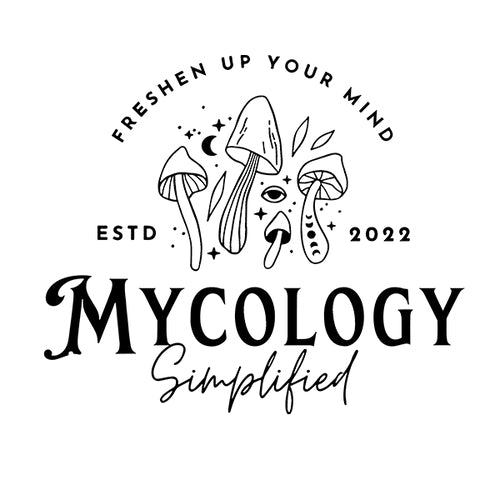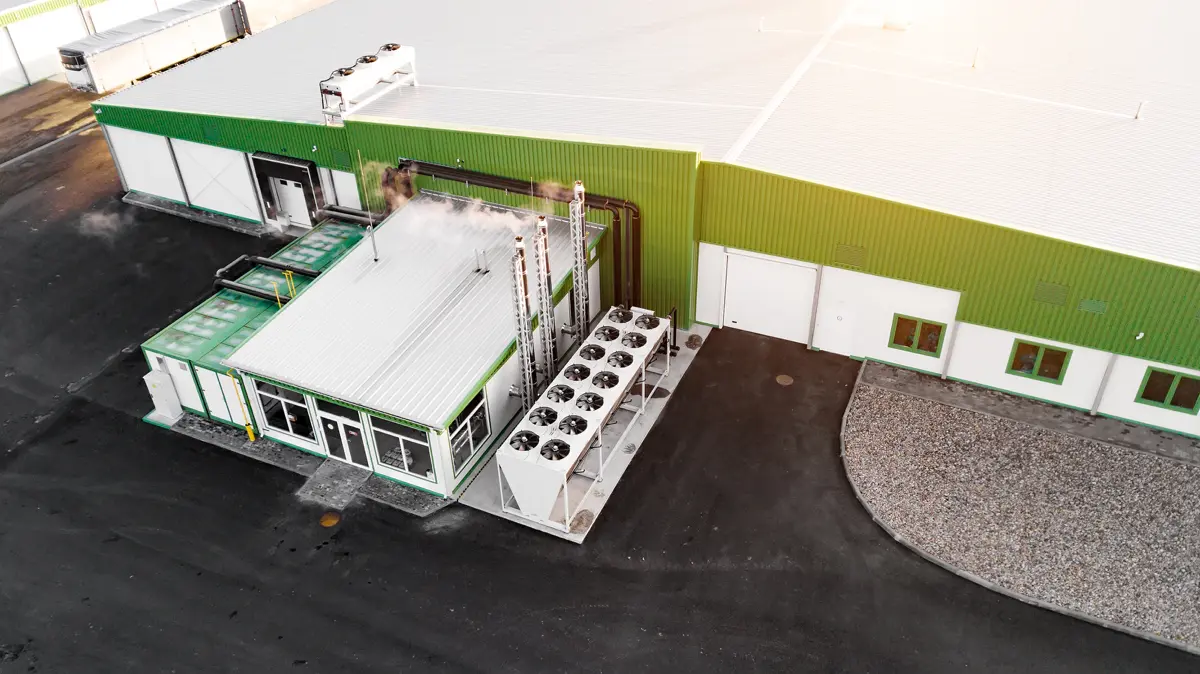
Innovations in Mycology Lab Supplies: How Modern Equipment is Changing Mushroom Cultivation in the United States
Compartir
Introduction to Modern Mycology Lab Supplies
Mycology, the study of fungi, has taken a giant leap forward thanks to modern lab supplies. Now, cultivating mushrooms isn’t just about waiting for them to pop up in a moist corner of the woods. It’s become a science-driven journey, opening up new doors for both research and agricultural use. Today, we’re not stuck with the basic petri dishes and makeshift incubators of yesterday. We’ve moved on to specialized equipment that caters specifically to the needs of fungi. Innovations like precise climate control systems let us create the perfect environment for mushroom growth, anywhere and anytime. There’s also a range of substrates enriched with exactly what mushrooms need to thrive, far beyond the old straw and wood chips. And let’s not forget about the advancements in genetic testing kits, making it easier than ever to understand and optimize mushroom strains for both yield and resistance to diseases. These modern tools not only make mushroom cultivation more efficient but also open the door to new possibilities in how we use and benefit from these fascinating organisms.
Key Innovations Revolutionizing Mushroom Cultivation
The world of mushroom cultivation in the United States is witnessing a fascinating revolution, thanks to some key innovations in mycology lab supplies. First off, we’ve got automated growth chambers. These bad boys allow for precise control over temperature, humidity, and light, paving the way for mushrooms to grow faster and healthier than ever before. Then, there’s the magic of LED lighting. Certain mushrooms thrive under specific light conditions, and LEDs can be tuned to just the right wavelengths, making mushrooms pop up like never be

fore. Soil-less growth mediums have also stepped onto the scene, reducing the risk of contaminants and diseases while boosting yield. Imagine growing mushrooms without worrying about pesy bugs or molds—it’s happening! Automated harvesting equipment is another game-changer. These machines save tons of time and labor, gently picking mushrooms at their peak. Last but not least, data analytics and machine learning are making their way into the mushroom farms, helping cultivators predict the best growing conditions and solve problems before they affect the crop. These innovations are not just making mushroom cultivation easier; they’re setting the stage for a boom in both quality and quantity. It’s a fantastic time to be part of this field, witnessing how modern technology is helping us grow better mushrooms than we ever thought possible.
Advanced Equipment Used in Today’s Mycology Labs
Today’s mycology labs are like the high-tech hubs of the mushroom world. Think of them as the command centers where science meets cultivation. Here, you’ll find equipment that sounds like it’s straight out of a sci-fi movie, but it’s all real and super effective for growing mushrooms. First off, there are climate-controlled growth chambers. These are basically the ultimate playgrounds for mushrooms, giving them the perfect temperature, humidity, and ventilation to thrive. Imagine trying to create a mini-world where mushrooms feel right at home—that’s what these chambers do.
Then, there’s the laminar flow hood. This piece of equipment is a game-changer. It makes the air super clean around the mushroom cultures, eliminating any unwanted guests like bacteria or mold. This means healthier mushrooms and less chance of a whole batch going bad.
Autoclaves come in next. They sterilize everything from the growth substrates to the tools used in the lab. Think of them as giant pressure cookers that kill off any germs or spores that could mess with the mushroom cultivation process.
And let’s not forget the petri dishes and agar, the classic duo for growing mushroom cultures in a controlled environment. Scientists can watch the mushrooms grow and pick the best ones for cultivation. It’s like holding auditions for mushrooms to see which ones get to the big leagues.
In digital terms, there are software systems that track every little change in the growing environment, making adjustments on the fly to ensure optimal growth conditions. It’s like having a smart home system, but for mushrooms.
All these pieces of advanced equipment make today’s mycology labs incredibly efficient and precise in growing mushrooms. The level of control and monitoring they offer is something mushroom cultivators a few decades ago could only dream of. Thanks to this high-tech gear, the mushroom cultivation game in the United States is changing for the better.

Impact of Modern Lab Supplies on Mushroom Cultivation Efficiency
Modern lab supplies are revolutionizing the way mushrooms are cultivated in the United States, making the process not just easier but significantly more efficient. With the latest gadgets and technology, growers are now able to monitor and control environmental conditions like temperature, humidity, and CO2 levels with precision. This precision allows for optimal mushroom growth conditions that can be consistently maintained, leading to higher yields and better quality produce.
Moreover, the use of automated systems and robotics for tasks such as planting, monitoring, and harvesting reduces labor costs and minimizes human error. These technological advancements mean that farmers can now produce mushrooms on a scale and with an efficiency that was not possible before.
Additionally, the introduction of sophisticated data analysis tools enables growers to make informed decisions based on detailed insights related to growth patterns, disease management, and yield optimization.
In essence, modern mycology lab supplies are not just changing, but significantly enhancing how mushroom cultivation is approached in the United States. They bring a blend of precision, efficiency, and economy that benefits growers and consumers alike.
How Automation is Transforming Mushroom Farming in the U.S.
Mushroom farming in the U.S. is getting a big upgrade, thanks to automation. Gone are the days when cultivating mushrooms was all about manual labor. Now, farmers are using machines that do everything from stating spores to harvesting mushrooms. This shift means more mushrooms can be grown with less work, and it’s all happening faster than ever. With automation, there’s less chance for error, and conditions can be kept just right for mushrooms to thrive. Plus, machines can work day and night, which means production never has to stop. This doesn’t just help farmers keep up with demand; it’s also making the process more eco-friendly by reducing waste and improving efficiency. In short, automation is changing the game for mushroom farming in the U.S., making it possible to grow more mushrooms with less effort and a smaller environmental footprint.
The Role of Data Analytics in Mycology
Data analytics is revolutionizing mycology, the study of fungi, including mushrooms. In simple terms, it’s about using software and algorithms to make sense of a lot of data. This isn’t just any data, but precise, detailed info on things like mushroom growth rates, optimal conditions for various fungi species, and genetic information that can pinpoint how different strains might react to those conditions. Why does this matter? Because by understanding these data points, scientists and cultivators can make more informed decisions, leading to healthier crops and more efficient growing operations. For example, data analytics can tell a grower the best temperature and humidity for a certain mushroom strain, reducing guesswork and wasted resources. It’s a game-changer, making mushroom cultivation not just an art but a precise science.

Sustainable Practices in Mushroom Cultivation Using New Technologies
Mushroom cultivation is evolving rapidly, thanks in large part to new technologies. These innovations are not just about boosting production; they’re also paving the way for more sustainable practices. By integrating cutting-edge equipment, growers are able to reduce waste, conserve water, and minimize their environmental footprint. Automated systems for climate control and irrigation now enable precise management of resources, ensuring that mushrooms grow in optimal conditions with minimal excess. Another game changer is the use of biodegradable materials for mushroom substrates and packaging, significantly cutting down plastic use and other non-renewable resources in the cultivation process. Moreover, LED lighting has replaced traditional lighting systems, slashing energy consumption by up to 70%. These advancements are crucial for the future of mushroom farming, pointing towards a more efficient and environmentally friendly approach. It’s clear; the path forward for mushroom cultivation in the United States is being reshaped by technology, making sustainability not just a goal but a practical reality.
Challenges and Solutions in Implementing Modern Mycology Equipment
Mushroom cultivation is evolving, but not without its bumps. Upgrading to modern mycology equipment presents challenges. First, the cost can be a big barrier. This equipment isn’t cheap, and smaller growers might struggle to afford it. Then there’s the learning curve. New technology means growers need to get up to speed, which takes time and potentially more money for training. Also, compatibility issues can arise. Integrating new tools with existing systems isn’t always smooth sailing.
But, there are solutions. One is grants or financing options aimed at small agricultural businesses. This help makes the cost more manageable. Another is utilizing online resources and communities. They’re gold mines for learning and troubleshooting. Many manufacturers also offer training when you purchase their equipment, solving the learning curve issue. Plus, for compatibility, careful planning and consulting with the equipment manufacturers can ensure new purchases work well with what you already have.
Despite these hurdles, the benefits of upgrading to modern mycology equipment—like increased efficiency and potentially higher quality mushrooms—are too good to ignore. It’s about finding the right balance between overcoming these challenges and reaping the benefits of innovation.
Future Trends in Mycology Lab Supplies and Mushroom Farming
Mushroom farming is evolving, and with it, the tools and supplies used in mycology labs. We’re seeing a move towards more sophisticated equipment, promising more efficiency and higher yields. Here’s what’s on the horizon: Automated systems for monitoring and controlling environmental conditions such as humidity and temperature are becoming the norm. Expect labs to get outfitted with sensors and software that keep conditions just right, without constant human intervention. LED lighting solutions tailored to mushroom growth cycles are another big trend. These lights use less energy and can be adjusted to mimic natural light patterns, boosting growth. Precision agriculture techniques, usually seen in large-scale farming, are trickling into mushroom cultivation. Using data analytics to improve yields and reduce waste will be a game-changer. Lastly, there’s a push for sustainability, with biodegradable lab supplies becoming more common. This not only reduces waste but also aligns with the eco-friendly ethos of many mushroom growers. These trends indicate that the future of mushroom farming is high-tech, efficient, and sustainable.
Summary: The Future of Mushroom Cultivation with Advanced Lab Supplies
Mushroom cultivation in the United States is on the brink of a major transformation, thanks to the advent of cutting-edge mycology lab supplies. These modern tools and equipment are revolutionizing how we grow mushrooms, making the process more efficient, reliable, and scalable. From state-of-the-art incubators that ensure the perfect growing conditions to advanced sterilization equipment that keeps contamination at bay, these innovations are setting new standards in mushroom cultivation. With the integration of technology such as IoT devices for real-time monitoring and AI for predictive analytics, growers can now achieve higher yields, better quality mushrooms, and reduced crop failures. This leap in technology not only benefits commercial growers but also opens up new possibilities for research and development in the field of mycology. The future of mushroom cultivation is bright, with these advancements paving the way for more sustainable and profitable practices.

